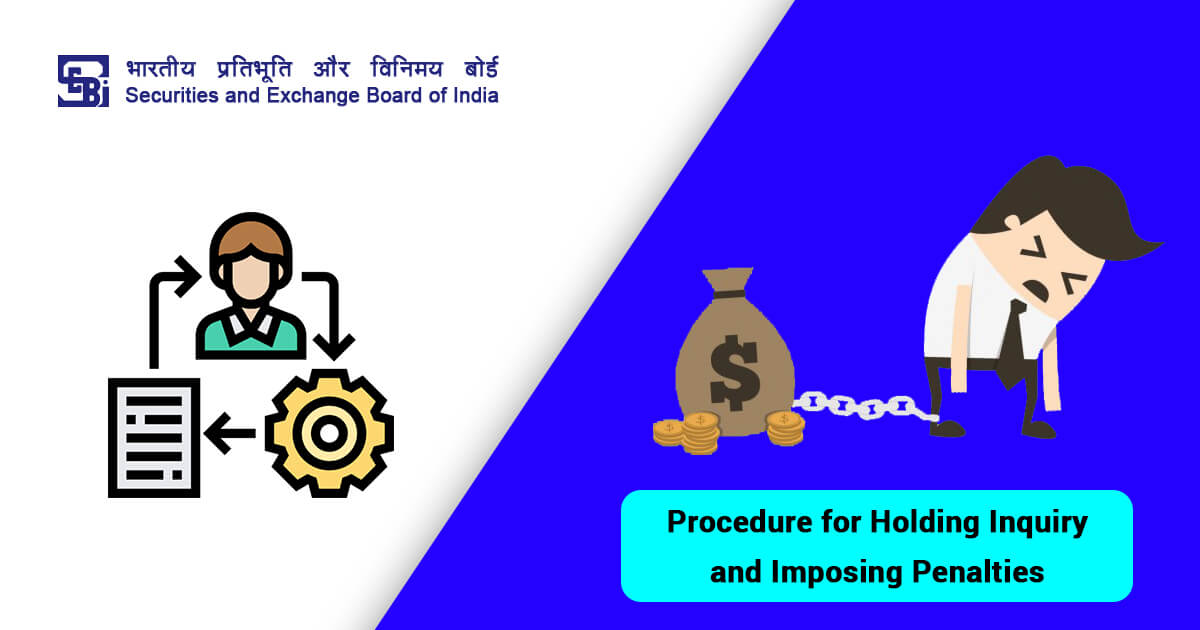How to Become a Portfolio Manager Registered with SEBI

Swarit Advisors | Updated: Aug 31, 2019 | Category: SEBI Advisory
A person responsible for the management, advising, supervising a portfolio on the behalf of his clients is known as a portfolio manager. A portfolio means a bunch of investments. And the service provided for managing the fund of a client is termed as portfolio management.
The portfolio manager is expected to be capable enough for satisfying the needs of its client by investing the fund with the optimum return. He holds a fiduciary duty and he must act within the framework of the agreement signed between the portfolio manager & his client. Portfolio managers are the professional who manages the investment of their clients.
Table of Contents
Regulatory Framework
Any individual who is interested to act as a portfolio manager must get itself registered with SEBI. The concept of a portfolio manager is governed by the provisions of SEBI (Portfolio Management) Regulations, 1993.
Understanding Portfolio
The portfolio is the bunch of investment tools such as bonds, equity, private equity, stocks, mutual fund, etc. that can be used depending upon the nature of risk & return requirement of the client along with investor’s income, budget & time framework. There are two types of portfolios:
- Market portfolio
- Zero investment portfolio
Who is a Portfolio Manager?
An individual who designs a suitable investment plan and follows the methods of portfolio management for managing the portfolio of investors is a portfolio manager. The portfolio manager gives advice & consultancy to the investor to opt for the best investment plan as per his risk-return balance & income and budget. The portfolio manager must understand the client’s financial goals and accordingly provide the bunch of investment solutions from which an investor can choose from.
Portfolio Management- An Overview
Portfolio management is the art of managing the investor’s fund and selecting the right investment policy for the individual considering both aspects of minimum risk with maximum return. In simple terms, it is the management of individual investment. Portfolio management is needed for pursuing the following purpose:
- Portfolio management gives the best investment plan as per their income, budget, return expectation, time frame
- With the help of portfolios, management risk is minimized by creating the chances of profit.
- Customized investment solutions can be provided to the investors as per their needs & requirement.
Steps for Portfolio Management
Portfolio Managers managing the funds of their clients is known as portfolio management. Client’s financial goals are achieved following these management steps:
- Client’s objective: Individuals invest the short amount with limited time horizon whereas institutes invest a huge amount of capital. For this portfolio manager has to communicate with the clients to understand their objectives of investment & desired return they are expecting.
- Choose asset classes: Portfolio manager than has to choose for a suitable class of assets for investment such as bonds, shares, private equity, etc.
- Strategic Asset Allocation: Portfolio manager has to conduct this strategic asset allocation for weighing each class of asset. That is an investment is done in the ration, for example, 40% in equity & 60% in bonds to managing risk-return balance.
- Tactical Asset Allocation: As per this approach investment managers make suitable changes in investment based on the capital market opportunities. This approach is slightly different from that of Insured Asset Allocation in which portfolio managers adjust the asset weights based on the existing wealth of clients. Any of the two approaches can be used by a manager simultaneously but both can’t be used together.
- Risk management: After selecting the weight of each portfolio, the manager has to control the following risk arising out of an investment:
• Security selection risk can be managed or eliminated is it hold market index directly. It ensures that the return from a particular asset class is similar to that of the asset class benchmark. This risk arises from the manager’s. Strategic Asset Allocation (SAA) actions.
• Style risk arises from the manager’s investment style. Growth managers beat the benchmark return in the bull market whereas underperforming during bear markets. And value manager beat benchmark during bull market & frequently beat the average in a bear market.
• By choosing the systematic risk factor as the benchmark, the portfolio manager can avoid TAA risk, i.e.Tactical Asset Allocation risk.
- Measurement of Performance: The portfolio manager measures the performance using the CAPM model method. Capital Asset Pricing Model (CAPM) describes the relationship between expected return & risk of security. Performances can be evaluated by reducing the excess of portfolio return from that of the excess market return.
Procedure for Portfolio Manager Registration
Any professional having expertise in investment & managing or handling the fund and investments on behalf of any individual or institution is a portfolio manager. Following is the step for getting registered under SEBI as portfolio manager:
- An individual who wants to be a portfolio manager shall apply online to SEBI. Apply in Form A to the Board along with a non-refundable fee of INR 1 Lakh.
- After the submission of an application, it is scrutinized by the Board. If the application is incomplete or in any form or it is not as per the instructions of the law, it can be rejected by the Board. The Board may demand further information to clarify or even may demand an applicant to appear in person.
- Following points are considered by the Board before approving an application & granting a certificate of registration:
• An applicant should be a body corporate & shall have an adequate infrastructure
• The principal officer shall have adequate knowledge & qualification in the field of finance, law, security market and shall have experience of 10 years in capital market
• An applicant must have a minimum of 2 individuals under their employment with one person having at least 5 years of experience in the area of finance, law & security market.
- The Board will confirm the criteria for conforming fit & proper condition of an applicant.
- The capital requirement shall not be less than the net worth of INR 2 Crore.
- An application shall be filed along with the payment of a fee of INR 10 Lakhs.
- Board on being satisfied with the entire requirement shall grant the certificate of registration in Form B.
- The license remains valid unless it is suspended or cancelled by the Board.
Roles of Portfolio Manager
Following are the various roles & responsibilities that are performed by the portfolio manager:
- Portfolio manager plays a vital role in managing the fund of investors and deciding the best investment plan for them
- They make aware of the various investment tools & policies to its client suggesting and advising them to choose the best policies as per their requirement.
- They design the customized investment solutions depending upon the budget, income & time frame of the client
- The portfolio manager must keep himself updated with the latest amendment and changes as per the latest notifications & circular of SEBI from time to time. Portfolio manager shall be honest with its client for creating long term relationship.
- It’s the responsibility of the Portfolio manager to advice the investor about the best investment policy in the market rather than only focus on his commission or money. He must make the tailor-made investment plan that guarantees a maximum return with the least risk associated with it.
- The portfolio manager has to be a good decision-maker as they have to choose the best policy amongst the remaining.
- The portfolio manager must communicate with its clients regularly. He must always be accessible to its client and shall make himself available as and when required for the queries.
Pre-Registration Conditions
The Board on receipt of an application inspects and examines the following minimum requirements that have to be mandatorily fulfilled by an applicant:
- An individual is not authorized to apply for portfolio merchant registration. The applicant who is submitting an application to SEBI for registration of portfolio manager must be a Body Corporate.
- For effective discharging of portfolio management services an applicant shall have necessary infrastructure:
i. Office space
ii. Equipment
iii. Human resource
- The principal employer must have the following qualifications:
a) Post-graduation or professional qualification in the subjects of finance, law, accounting, or business management from any recognized university or institution
b) Minimum ten years of experience in the activities of the security market in related activities of the portfolio manager, stockbroker, fund manager, etc.
c) CFA charter qualified from CFA institute
- An applicant must have at least 2 employees who must have experience of minimum 5 years in the activities of stockbroking, investment management, fund management, etc.
- Capital requirement of INR 5 Crore must be fulfilled by an applicant.
- Details and disclosure of rejected applications already made by an applicant before SEBI.
- Disclosure of any disciplinary action initiated against the applicant or any person related to an applicant.
- No applicant, director, principal officer or an employee shall be involved in any kind of litigation.
Conclusion
Portfolio managers operate on a concept based on lending a helping hand to the investors who willing to invest but do not have requisite knowledge or expertise. The portfolio manager shall provide the service to its client on a non-discretionary basis and must advise him about the pros & cons of his investment.
Also, Read: How to Register a Mutual Fund with SEBI.














